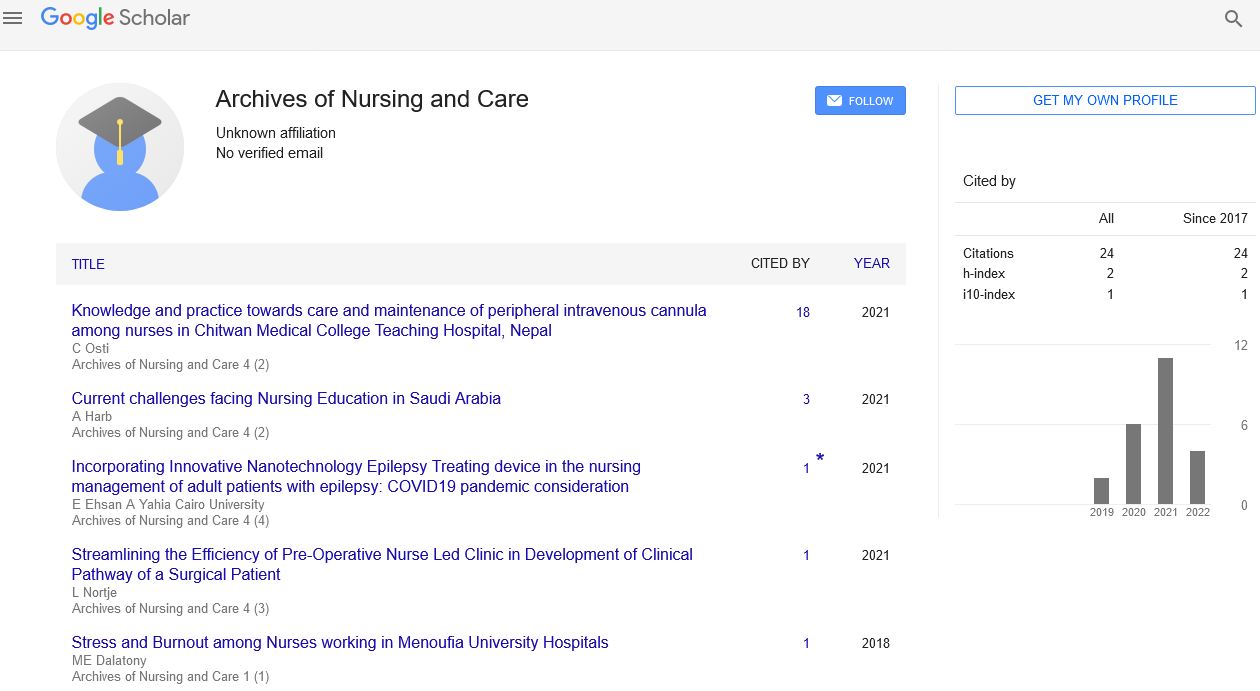Special Issue Article - Archives of Nursing and Care (2021) Volume 4, Issue 4
Demonstrating relevant KPI's in palliative care settings through nursing documentation
Susanne Raeburn-Burgess
Global customer relationship management, Switzerland
Abstract
The LEP® (Leistungserfassung in der Pflege) Method is a multilingual standardised nursing intervention
classification and workload measurement framework; used by more than 750 institutions throughout
Switzerland, Germany, Austria and Italy. LEP records both direct and indirect patient-care-related nursing
activities by case; day; and ward or unit. To quantify the time allocated to each intervention task, they
are assigned a standardized (default) time. LEP is used within the Electronic Patient Record (EPR) for
documenting nursing interventions and has been mapped to both ICNP and SNOMED-CT.
Automated links between nursing assessment, interventions, workload measurement, and outcomes
should support users in practice; whilst also increasing the nursing data’s explanatory power. The mapping
with ICNP and SNOMED-CT allows international comparisons of patient simulative care in terms of best
practice and/or cultural differences.
The various documentation requirements of the daily routine give rise to significant quantities of data.
Electronic documentation systems can collate this data in structured manner and enabling its use not
only for the immediate treatment situation as the core process, but also for a wider variety of cross-patient
processes for management and support.
The multiple uses of such nurse documented data will be showcased for purposes and KPI’s beyond the
treatment and nursing needs. Nursing data will be compared in a palliative setting with different wards
in institutions. Such as research, process optimisation, training selection, risk management, financial
controlling and personnel deployment planning. The finding will also demonstrate the data analysis for
palliative settings.
The examples demonstrate how multiple analytical possibilities are available within a digital nursing
classification. For example, both the type and number of services including time spent on them, at various
levels of detail and related service providers, recipients and health statuses.
Biography
Susanne Raeburn has completed a Master’s Degree from Aberdeen University. She has over 30 years of nursing management experience in different organizations and is now in the lead of digital standardized nursing documentation through Europe.

